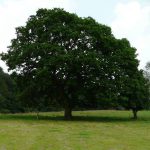
Blog / Choosing Your Hedge & Recommended Spacing
Related Posts
Choosing Your Hedge & Recommended Spacing
Many trees and shrubs can be clipped into a hedge. Smaller plants, 60-90cm, are easier and quicker to establish. Bigger plants 1m+ require more care and attention
The following varieties are the most popular hedging plants in the nursery depending on why the hedge is being grown:
Beech – Fagus sylvatica is the most popular hedging plant. It is deciduous, but maintains the golden/brown leaves over the winter giving screening and wind protection. It looks very well when maintained with an annual summer clipping. Beech will tolerate exposure but not waterlogging. In damp soil plant Hornbeam instead. Plant at 30cm spacing.
Whitethorn – Crataegus monogyna is the best stock-proof hedge for farmers and landowners. It will tolerate damp and exposure. Plant at 25cm spacing.
Portugal Laurel – Prunus lusitanica is an excellent evergreen hedge. Slower growing than Common Laurel, it will tolerate cold and exposure. Plant at 30-60 cm spacing depending on plant size.
Common Laurel – Prunus laurocerasus is also an excellent more vigorous evergreen hedge. It will tolerate shade and grow under mature trees. Plant at 30-60 cm spacing, depending on plant size.
Holly – Ilex aquifolium is a native evergreen species. It makes an excellent slow growing hedge and will grow by the sea. Plant at 30-60 cm spacing depending on plant size.
Lawson Cypress – Chamaecyparis lawsoniana is an evergreen conifer that will make an excellent total screen even in exposed places. Plant at 50-100cm spacing depending on plant size.
Photinia – ‘red robin’ makes a beautiful evergreen hedge with attractive red foliage in the new growth. Photinia requires clipping twice a year to maintain a full hedge. Plant at 30-50 cm spacing depending on plant size.
How to plant
- Dig over a strip of ground 30-60cm wide by about 20cm deep.
- Make sure ground is weed and grass free.
- Incorporate some compost but be very careful with farmyard manure, it must be well rotted, at least one year old or it can burn the plant roots.
- Do not plant too deep, make sure the root flair is at ground level or below.
- Crumble the soil as you backfill. Compress the soil around the roots but do not ‘heel in’ excessively.
- Check regularly for wind rock and firm in as required.


